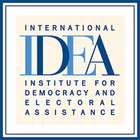 The use of referendums in processes of constitutional formation and change has increased considerably across the world in recent decades.
The use of referendums in processes of constitutional formation and change has increased considerably across the world in recent decades.
PART (I)
Summary
• This proliferation means that referendums have occurred in some of the most fragile and conflict-affected states, where there are many issues surrounding democracy and stability.
• This Discussion Paper identifies four main areas of constitutional practice that attract referendums.
• The use of the referendum has come to be seen as both highly significant and potentially problematic, particularly in territories beset by conflict or inter-ethnic division.
• The paper discusses three main issues that highlight the difficulties that referendums present for democracy and the rule of law: (a) constitutional status; (b) sovereignty; and (c) how we conceive of the ‘constitutional people’ or demos.
• ‘Constitutive referendums’ are categorically different from ‘contained constitutional referendums’. The former are instances of direct democracy deployed to create either new states or new constitutions (or both).
• The concept of sovereignty becomes more complex when we tie it to legitimacy. When we see popular endorsement emerge as the source of the constitution’s legitimacy, it is clear that sovereignty is tied inextricably to popular consent. So, when people vote in a referendum on the founding of a new constitution, these people are in a sense the ‘constituent subjects’ of the constitution.
• A constitutive referendum can help to overcome the ‘demos problem’, replacing an abstract problem with a real solution. The issue in play here is that of identity, and how a constitutive referendum can play a role in helping to frame the civic identity of the polity.
• But we are left with two considerable difficulties: defining ‘the people’ and the amenability of the constitutive referendum to accommodate societal pluralism.
• These are issues that need to be confronted if the referendum is to be a viable device in constitution-building within complex and divided societies.
• What is needed is a full articulation of what a referendum does and the crucial role it can play in legitimizing a constitution, underpinning its sovereignty and helping to frame constitutional identity. It is also crucial to understand that a referendum posits the idea of ‘the people’ speaking and determining; if the idea of ‘the people’ is deeply contested, the referendum may in fact exacerbate existing tensions.
1. Introduction
The use of referendums in processes of constitutional formation and change has increased considerably across the world in recent decades.
This Discussion Paper lays out the main areas of constitutional practice where referendums have increasingly been used.
It then considers the problems that this development poses in terms of how we determine the constitutional status of referendums and how their use has an impact upon our understanding of constitutional sovereignty and the very identity of the constitutional people.
A main point of focus for the paper is how the proliferation of referendums has extended to the process of constitution-making itself, involving some of the most complex and fraught states—for the most part, fragile and conflict-affected states—where the issues identified raise many practical problems.
2. Proliferation
The referendum has become a fixed feature of state- and constitution-building across the globe. The use of referendum has increased in four main areas of constitutional practice since the end of the Cold War.
First, in the founding of new states, the referendum was widely used in the early 1990s, in the respective break-ups of the Soviet Union and Yugoslavia, and it is now the default mechanism for the emergence of most new states, as exemplified by Eritrea (1993), TimorLeste (1999), Montenegro (2006) and South Sudan (2011).
Notably, referendums were held on independence in Scotland in September 2014 and, with disputed legality, in Catalonia and Kurdistan (Iraq) in 2017.
Second, when creating or amending constitutions at some point in time referendums were very rarely used; however, throughout Central and Eastern Europe, and more recently in Egypt, Iraq and Kenya (new constitutions), and Bolivia, Ireland and Rwanda (constitutional amendments), the referendum has emerged as an instrument both in the founding of new constitutions and as part of future amendment procedures within the text of these constitutions.
Third, although the referendum is a device deployed by nationalists in attempts to secede from states, it has also been central to the establishing of complex new models of substate autonomy (as we have seen in Spain and the United Kingdom in the late 1970s and 1990s respectively), and in ongoing processes of constitutional change (e.g. a referendum on further devolution for Wales in 2011).
A related example is the referendum in Canada on the draft Charlottetown Accord in 1992, where distinct referendum processes were held respectively in Quebec and the rest of Canada.
There is, then, a complex interplay between referendums used to create or extend autonomy to substate territories, and referendums on secession: the failure of the Charlottetown process sparked the process leading to the Quebec independence referendum in 1995.
The fourth and final example is various referendums in the EU context. While there has been sporadic use of referendums in the ratification of treaties, we are seeing the referendum emerge now as a default means of endorsing accession to membership itself.
We have also seen the referendum emerge in two new contexts—dissent and exit—each of which suggest that direct democracy is now a significant challenge to the integrationist dynamics of the European Union.
3. Issues
The use of the referendum across these various sites of constitution-making highlights the extent to which a referendum is a very different voting event from an election, and why the referendum has come to be seen both as highly significant and potentially problematic, particularly in territories beset by conflict or inter-ethnic division.
This chapter discusses three main issues that highlight the difficulties that referendums present for democracy and the rule of law: (a) constitutional status; (b) sovereignty; and (c) how we conceive of the ‘constitutional people’ or demos.
Constitutional versus constitutive referendums
Referendums must always be understood in relation to constitutional authority, that is, referendums do not occur in a vacuum.
In a sense, there is no such thing as pure, unmediated direct democracy, and referendums are always relational: to an existing or emerging constitutional order, and to the elite actors who are institutionalized by an existing constitution or who act in a directional capacity in the creation of a new constitution.
But it is still the case that the subject matter of referendums can vary greatly. In particular, it is useful to draw a distinction between the general and somewhat loose term ‘constitutional referendum’ and the more specific term, ‘constitutive referendum’, which is itself a category of constitutional referendum.
The term ‘constitutional referendum’ is a broad category, which we can take to mean any direct citizen-vote on a matter of constitutional change or constitutional creation.
The Venice Commission of the Council of Europe has defined constitutional referendums as ‘popular votes in which the question of partially or totally revising a State’s Constitution . . . is asked’ (European Commission for Democracy Through Law 2001).
As such, it can be a fairly routine exercise, for example part of the regular constitutional amendment process (as in Australia or Ireland), or it can be a ‘constitutive referendum’ when constitutional creation is at stake.
We can call the former ‘contained constitutional referendums’, operating as part of the ordinary constitutional amendment process, either on their own or in a process of joint decision with parliament to change the constitution.
This type of constitutional referendum takes place within, and its process and effects are determined by, existing constitutional structures. In this sense, the contained constitutional referendum is entirely internal to, and contained by, the constitution. ‘Constitutive referendums’ are categorically different from contained constitutional referendums.
They are instances of direct democracy deployed to create either new states or new constitutions (or both).
What makes these so challenging for constitutional theory and practice is that both the source of authority for such constitutions, and the legal effects they have, can be far less clear than is the case with contained constitutional referendums.
Occurring as they do at the interface of an old and a new constitutional order, it is possible (or even unavoidable) that referendums be conceived as in some sense transcending the normative authority of the existing order, supplanting and replacing it with a new constitutional order.
This is all very familiar—constitutions emerge and need a new source of authority. The ‘bootstrapping issue’ (from where does a new constitution derive its authority) is always there, whether a referendum is used or not.
But it is also clear that the referendum takes on a totemic significance that sets it apart from other routes towards a new constitutional order. Perhaps the key to understanding the attractiveness of the referendum in constitutionmaking processes is that the referendum offers a unique source of legitimacy, which can act as a bridge from the old to the new order.
The authority of democratic constitutions hinges upon legitimacy. In modern democratic theory this has been symbolized by the idea of ‘the people’.
But it is also accepted, going back to the Federalist Papers debates surrounding the Philadelphia process in the founding of the United States Constitution, that this idea of popular authorship of a constitution is highly attenuated.
‘The people’ do not really emerge directly as constitution-making actors. Insofar as they do, they are represented by elites. This is where the constitutive referendum takes on particular salience.
It can be presented as the transformation of the foundational popular act from one of symbolism to constitutional reality. Is it, in fact, the case that the referendum is a way in which the symbolism of popular constitutional authorship can be replaced by its actuality?
This is certainly the sense of many embracing the referendum in these foundational moments.
In this way, the referendum can play a key role not only in the process by which the new order derives its foundational authority but also in vesting it with the direct popular legitimacy that has come to be seen as the badge of validity for modern democratic constitutionalism.
It is in this context that the constitutive referendum takes on great significance. It is, therefore, perhaps no surprise that, in a number of the countries—Iraq and Egypt, for example—discussed during the fourth Edinburgh Dialogue on post-conflict constitutionbuilding, there is so much focus on the referendum as the defining event in the emergence of the new constitution.
In attempts to bring legitimacy to the process, the direct political act of ‘the people’ was seen as a validating step like no other.
___________




